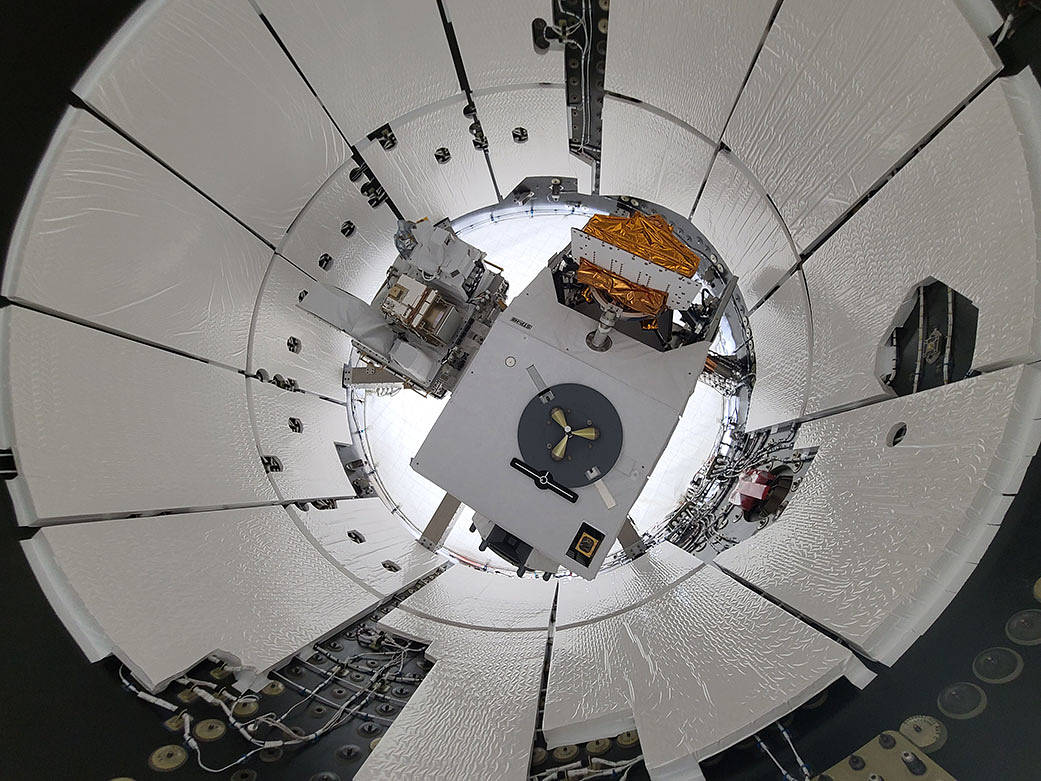The Compact Ocean Wind Vector Radiometer (COWVR) is no bigger than a minifridge. The Temporal Experiment for Storms and Tropical Systems (TEMPEST) is even smaller – about the size of a cereal box. Yet these two compact science instruments are designed to do a big job: to make the same high-quality atmospheric observations as weather satellites many times their size and at a fraction of the cost.
紧凑型海洋风矢量辐射计(COWVR)不比小型冰箱大。风暴和热带系统(TEMPEST)的时间实验甚至更小——大约一个麦片盒大小。然而,这两种紧凑型科学仪器的设计目的是完成一项艰巨的任务:以比气象卫星小很多倍的体积和更小的成本,进行与气象卫星相同的高质量大气观测。
Built by NASA’s Jet Propulsion Laboratory in Southern California, the two radiometers are part of the U.S. Air Force’s Space Test Program-Houston 8 (STP-H8). They launched aboard a SpaceX Dragon cargo spacecraft on Tuesday, Dec. 21, 2021, on commercial resupply mission to the International Space Station as part of SpaceX’s 24th commercial resupply mission for the agency. They’re considered technology demonstrations, and if they perform as planned, weather forecasting could be in for a technological boost.
这两个辐射计由NASA位于南加州的喷气推进实验室建造,是美国空军空间测试计划休斯敦8号(STP-H8)的一部分。他们于2021年12月21日周二搭乘SpaceX的龙货运飞船发射升空,执行对国际空间站的商业再补给任务,这是SpaceX为NASA执行的第24次商业再补给任务的一部分。它们被视为技术演示,如果它们能按计划执行,天气预报可能会得到技术提升。
In this image, the COWVR and TEMPEST instruments are shown in the trunk of the cargo craft.
在这张图片中,COWVR和TEMPEST仪器显示在货船的后备箱中。
Learn more: 5 Things to Know About a Pair of Small But Mighty Weather Instruments
了解更多:关于一对小型但功能强大的气象仪器,你需要了解的5件事
Image Credit: SpaceX
影像来源:SpaceX



